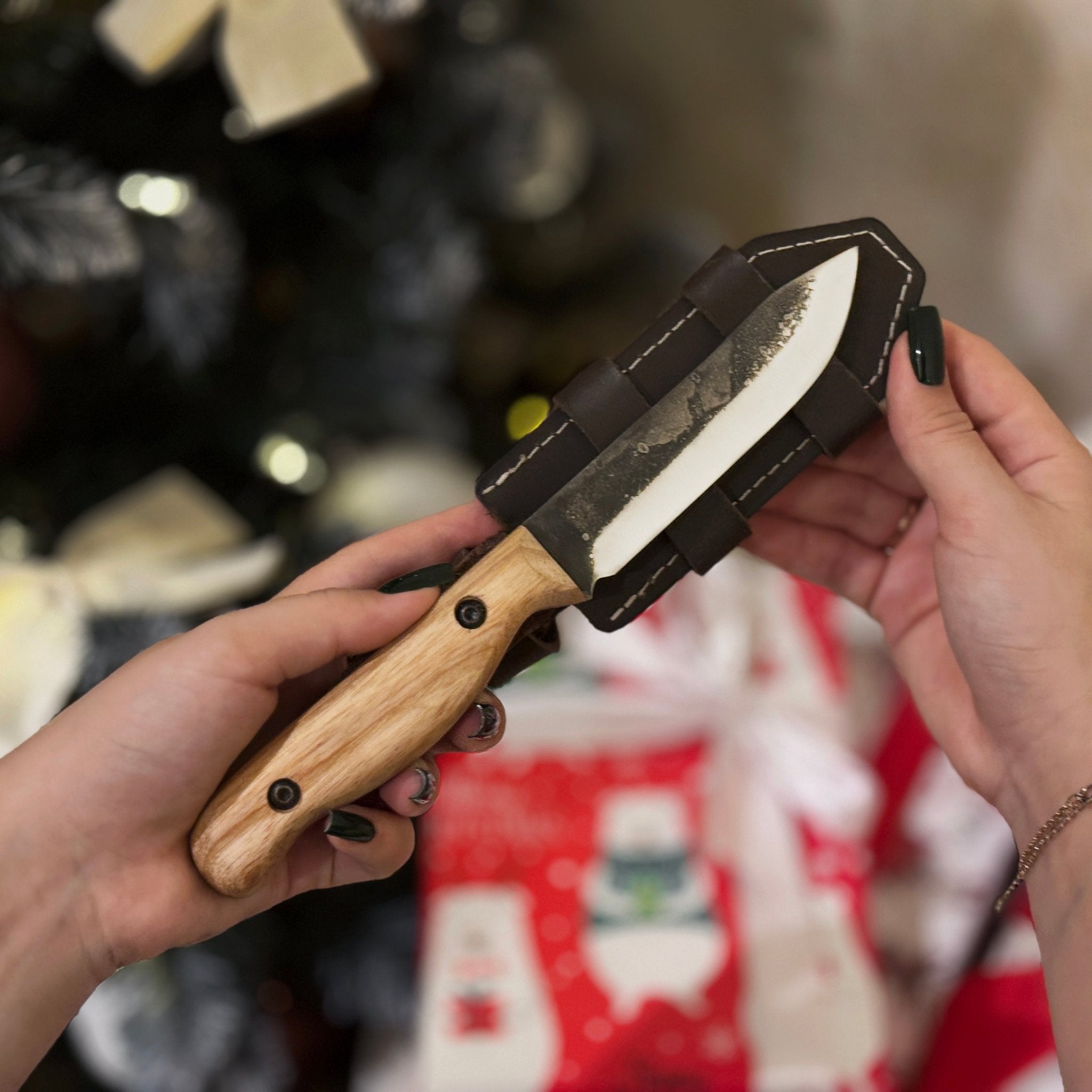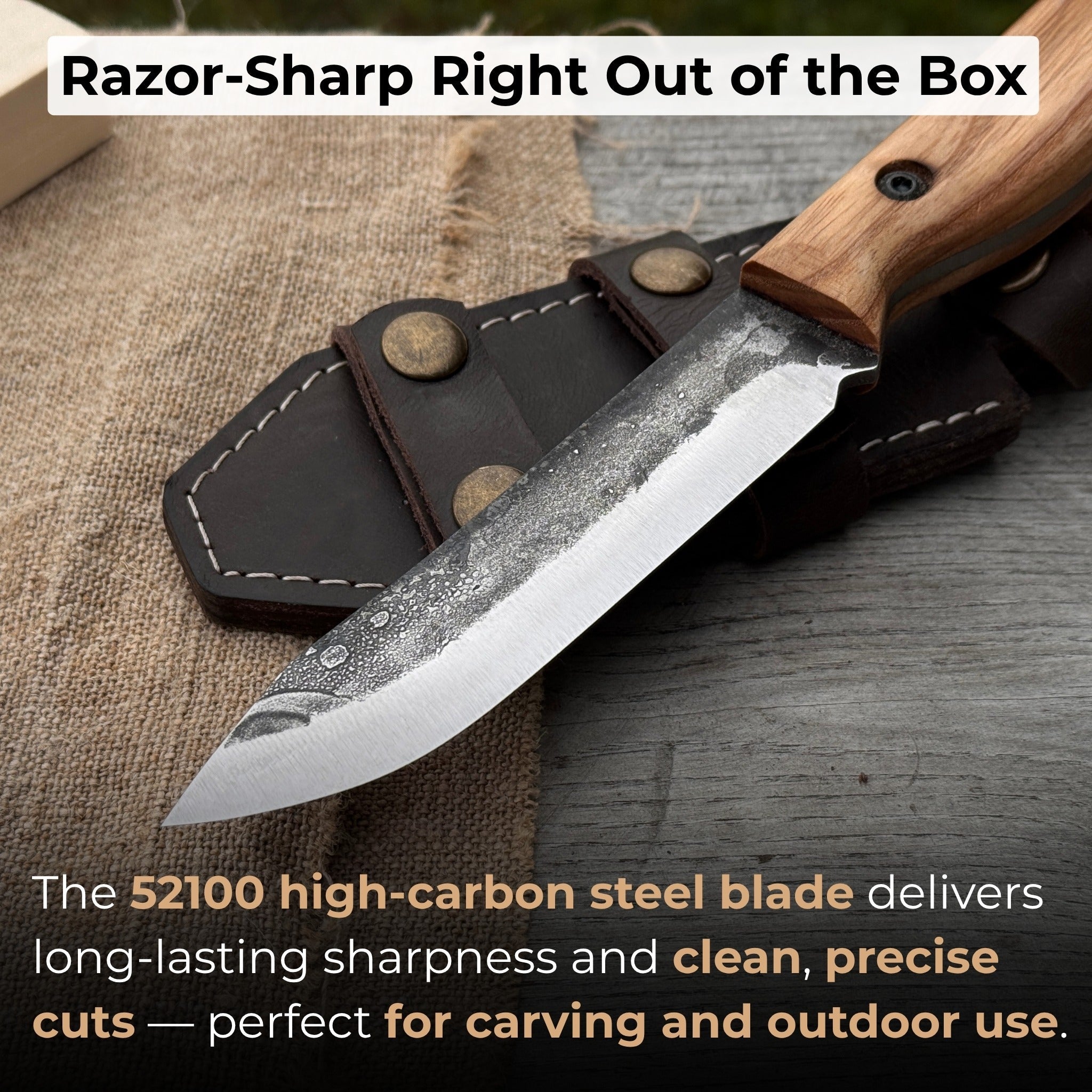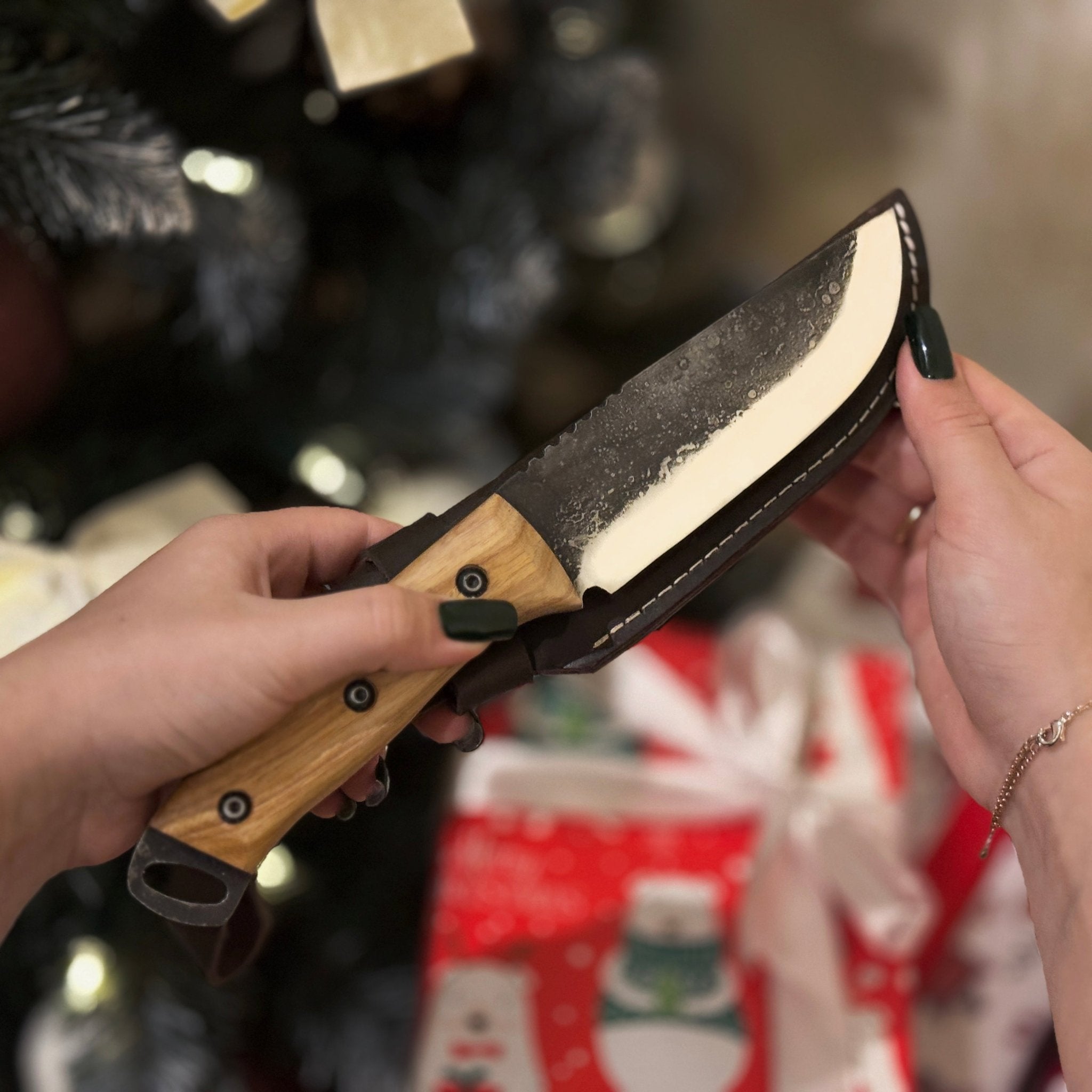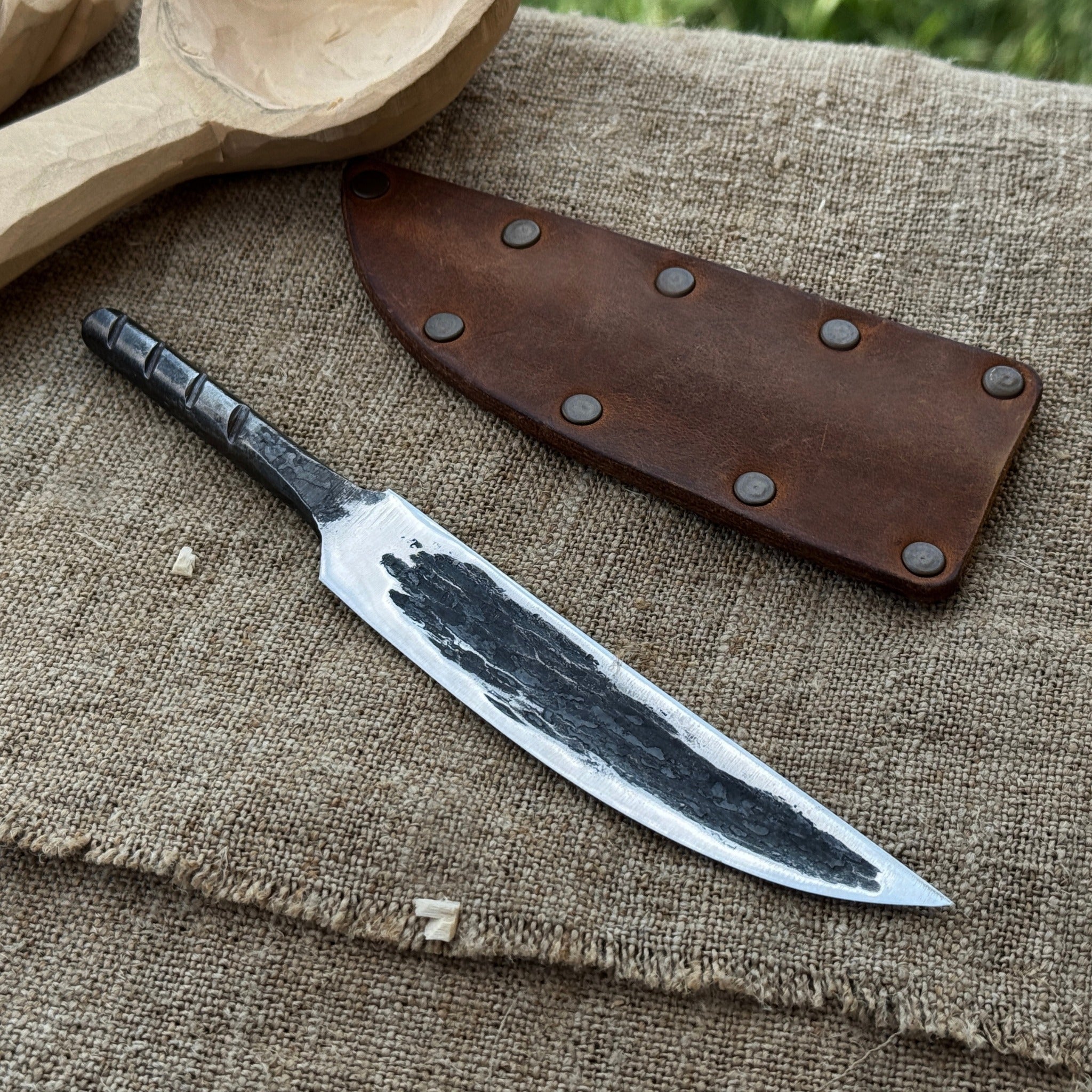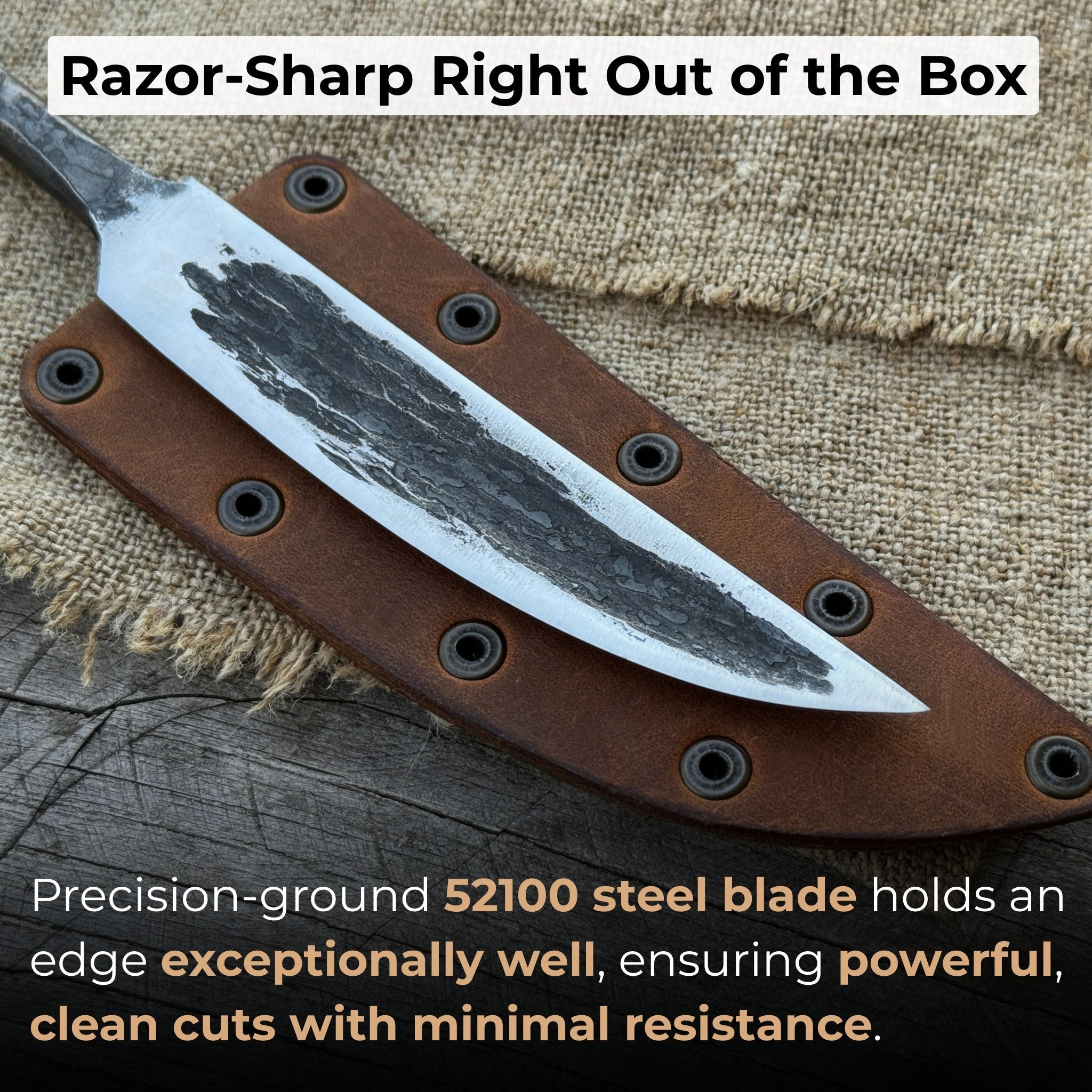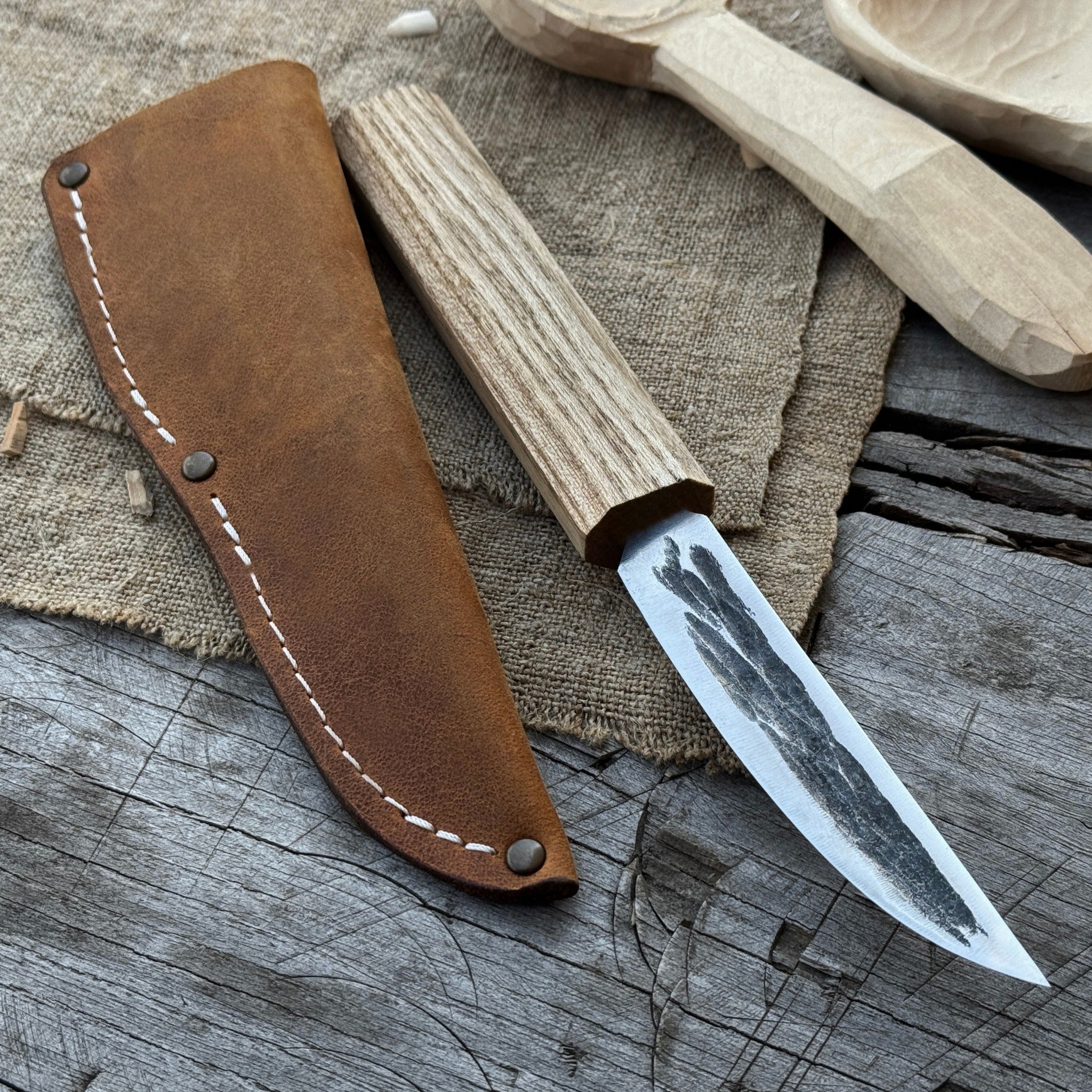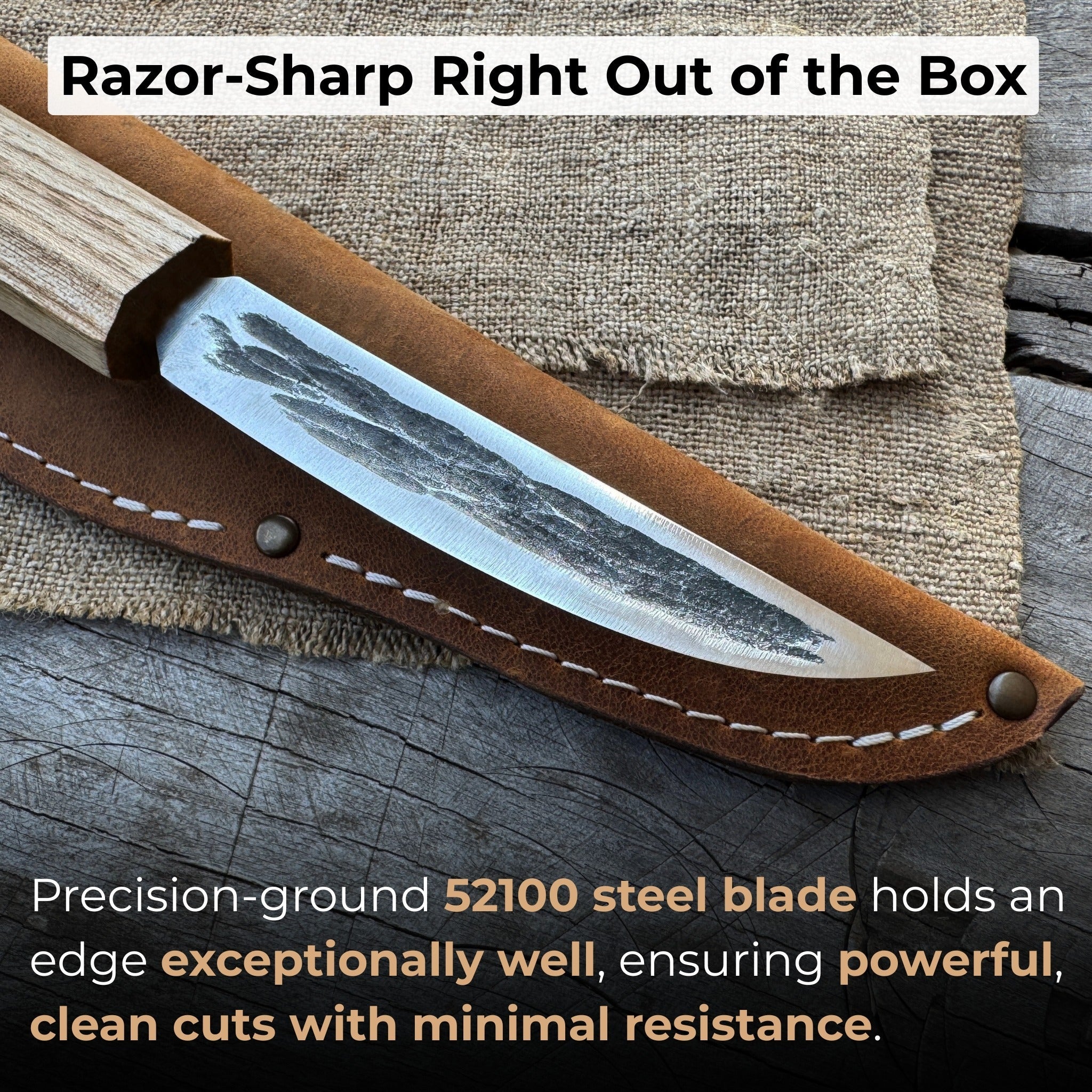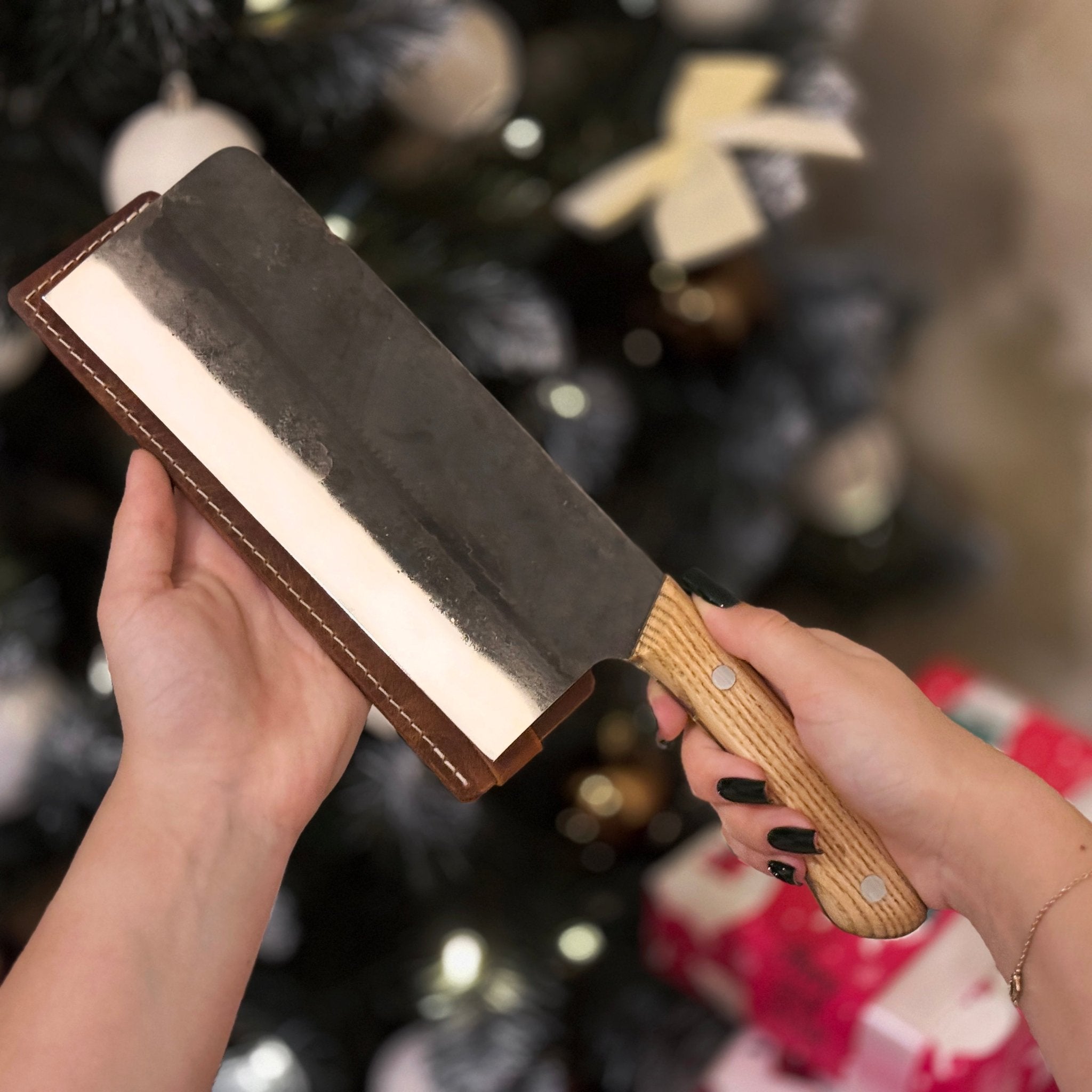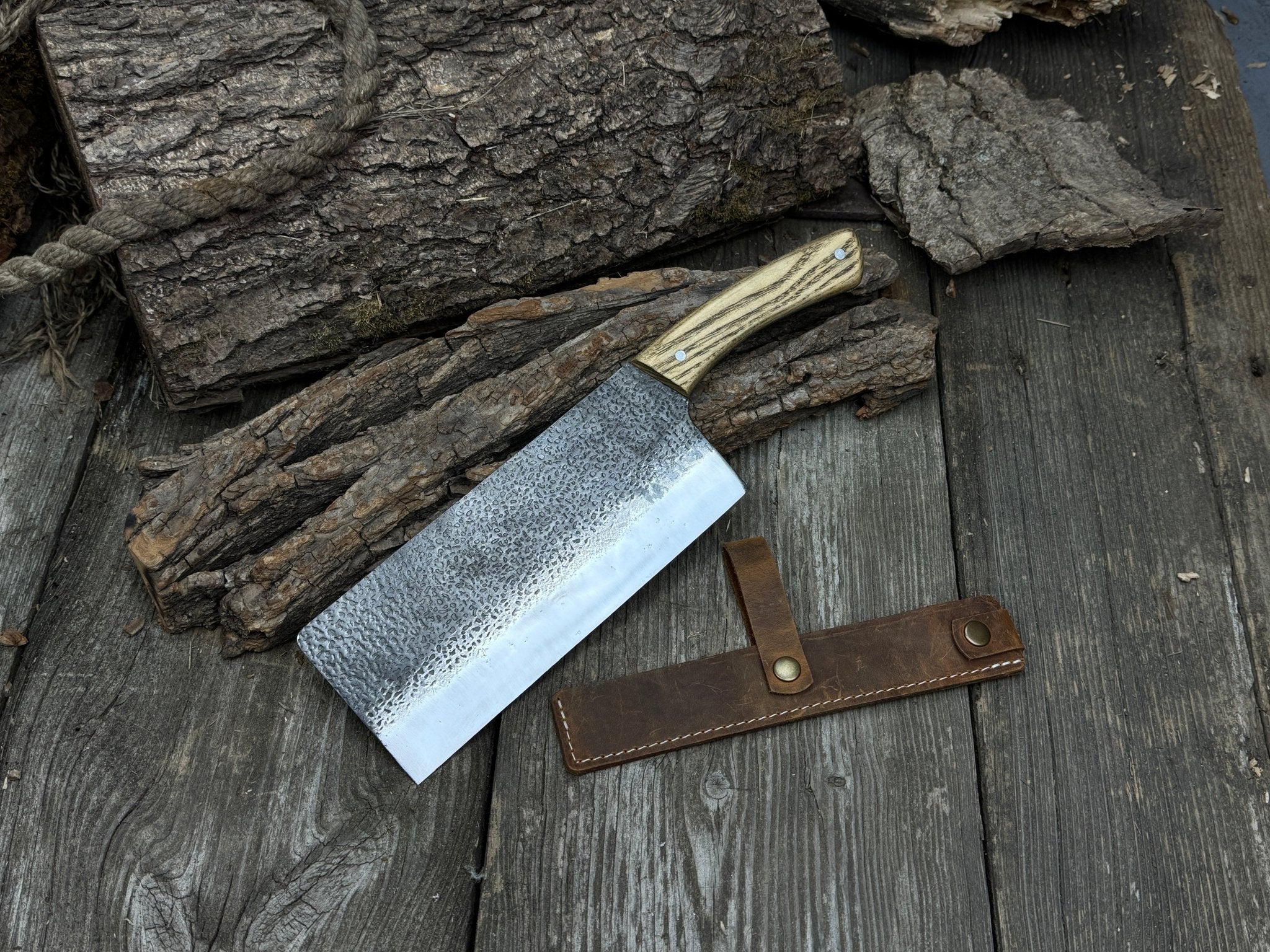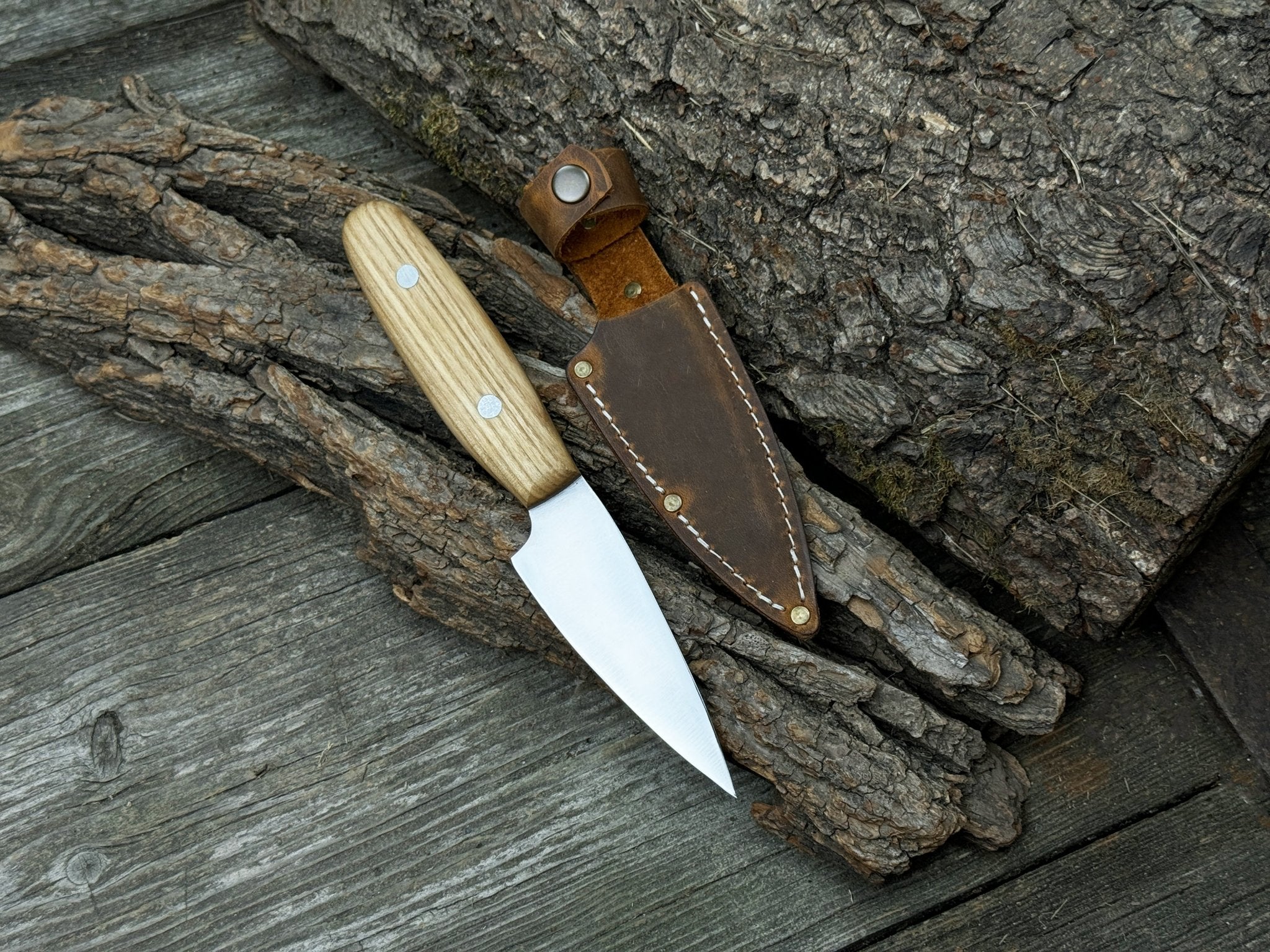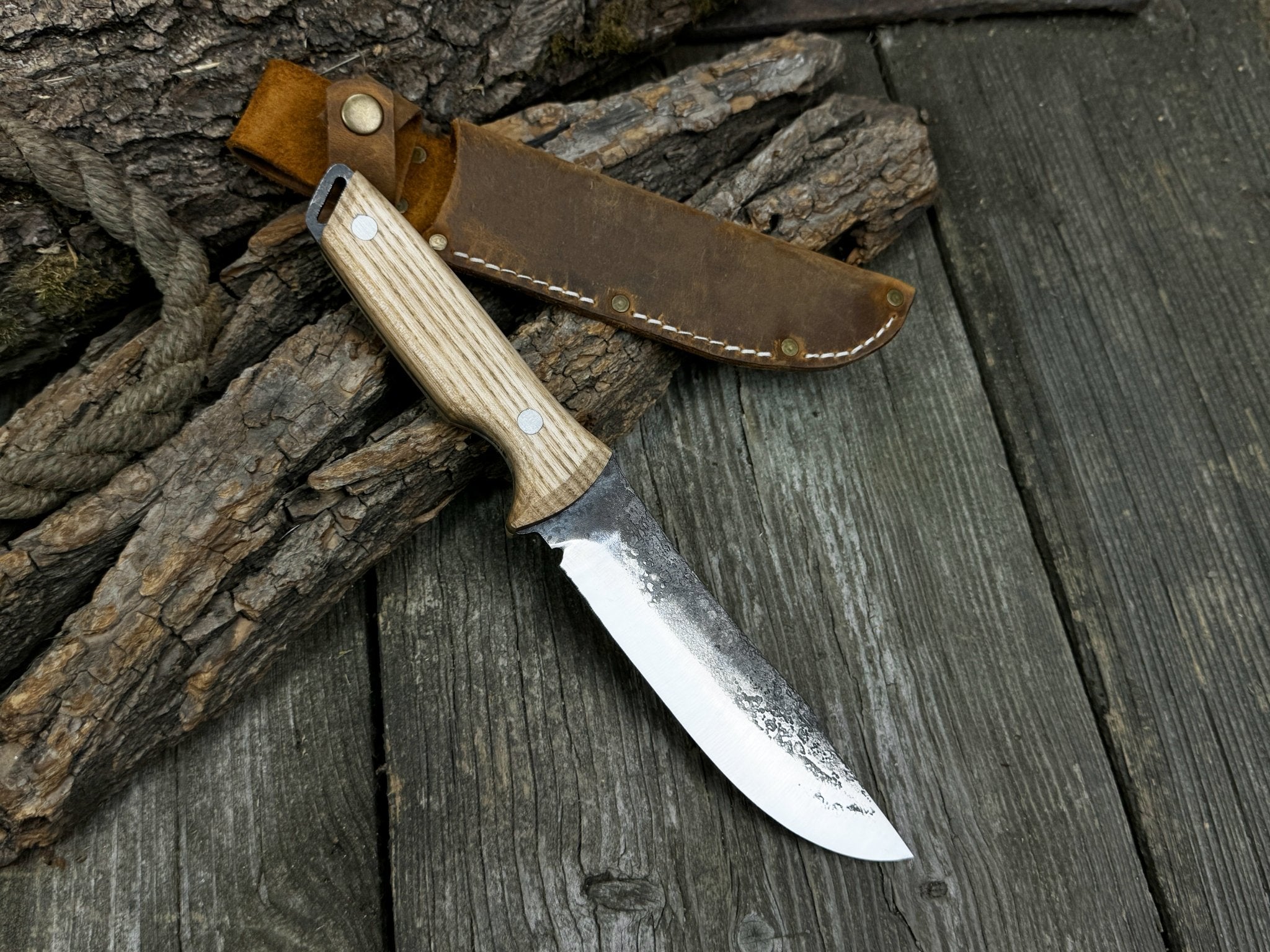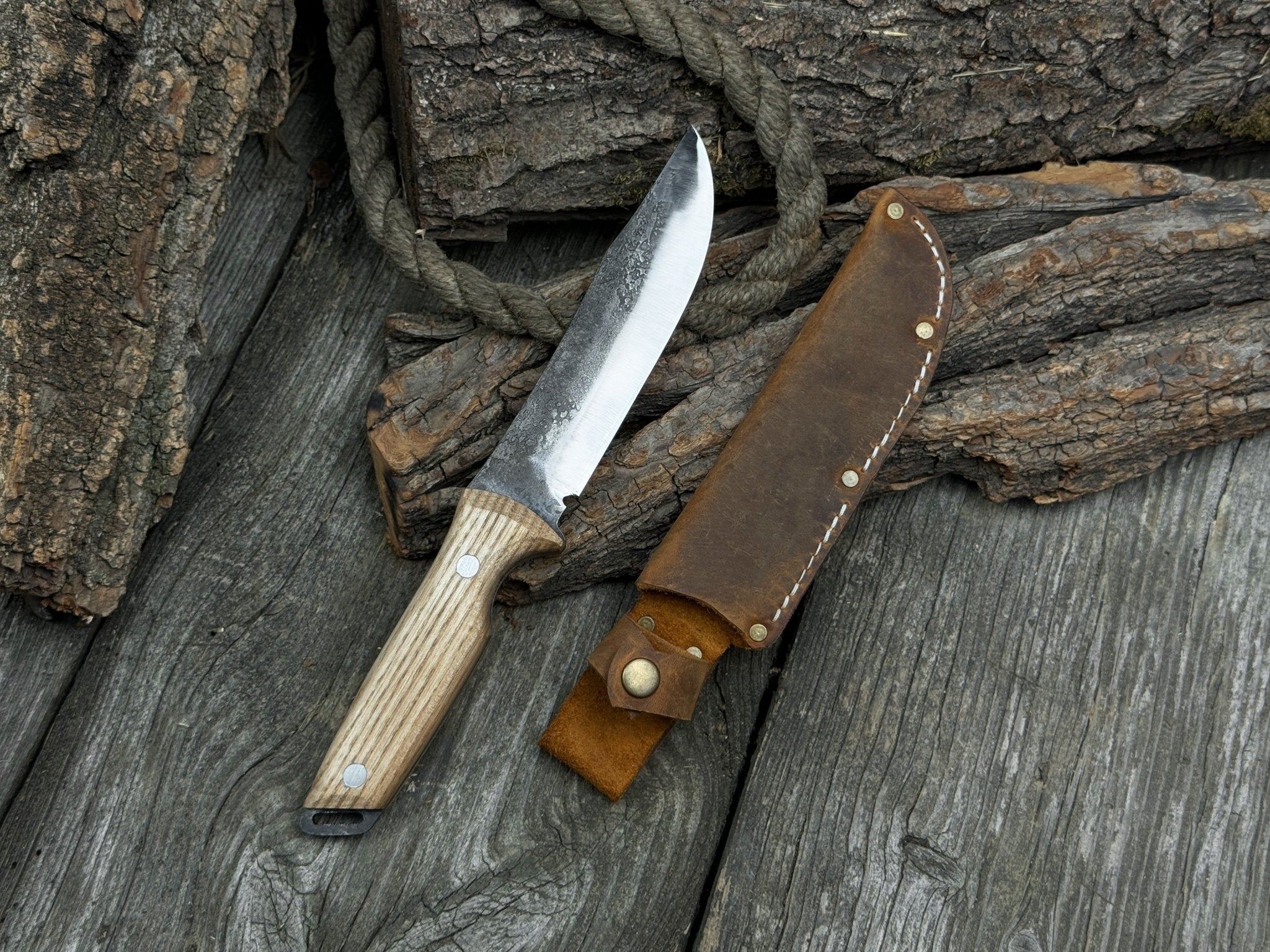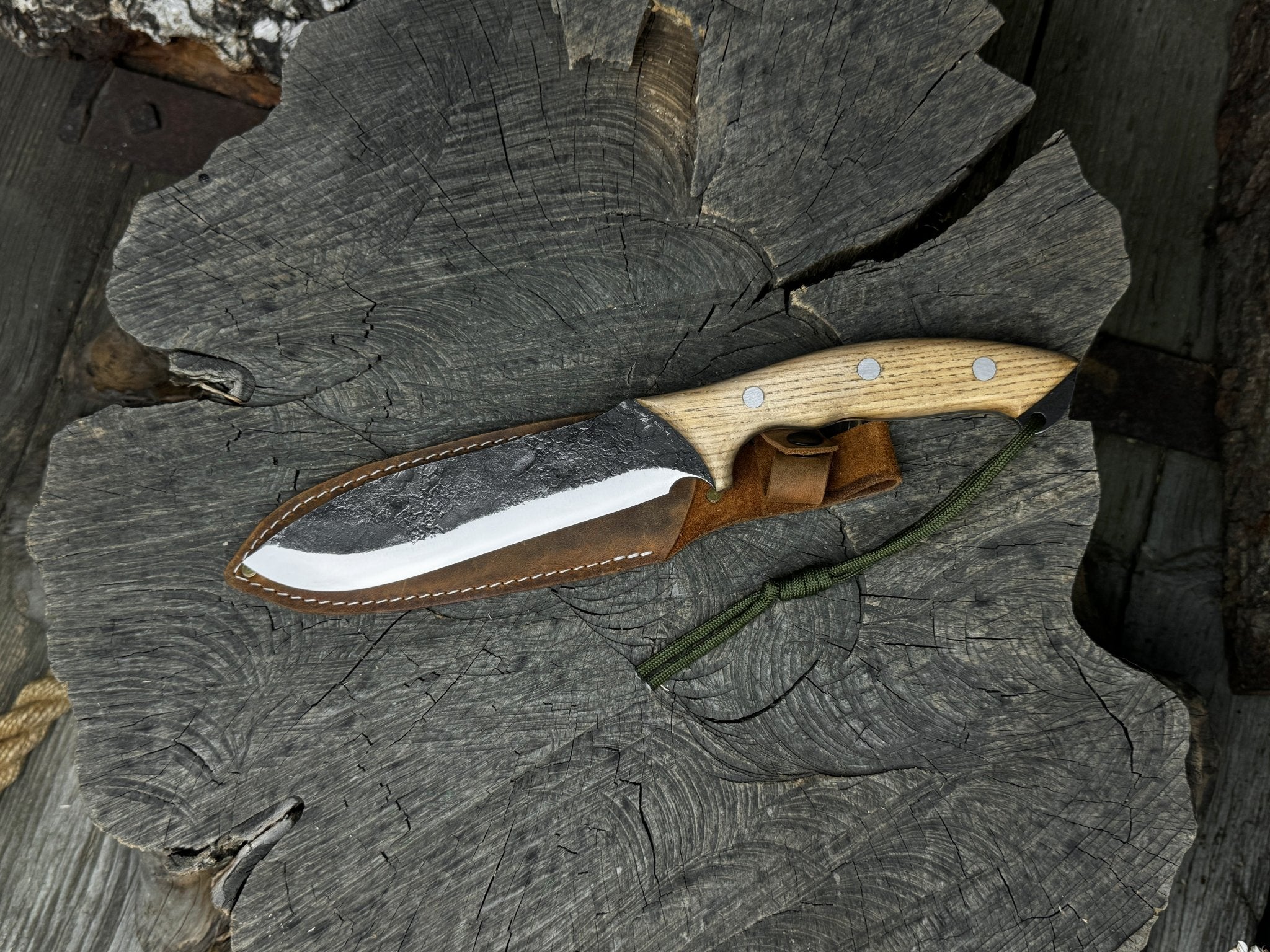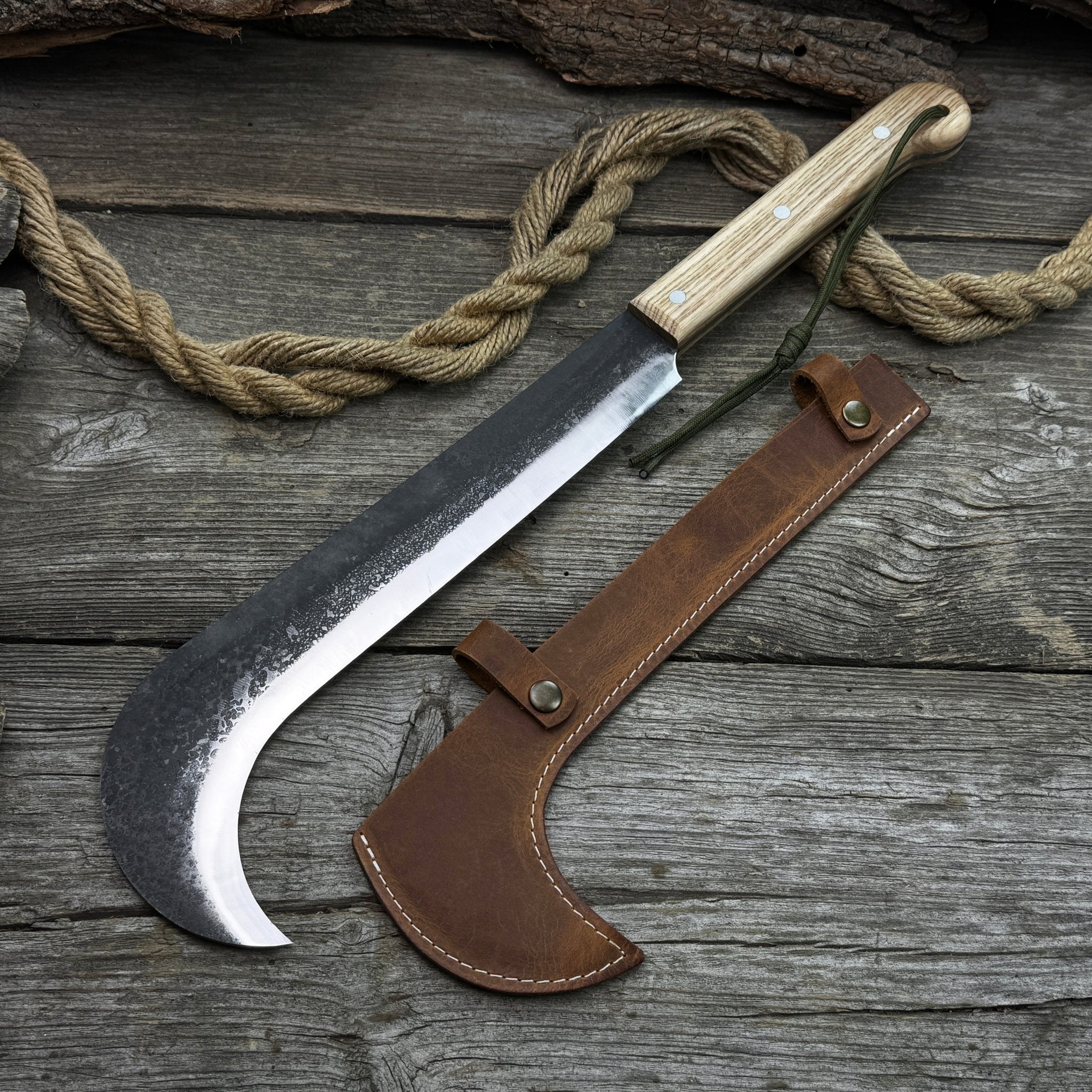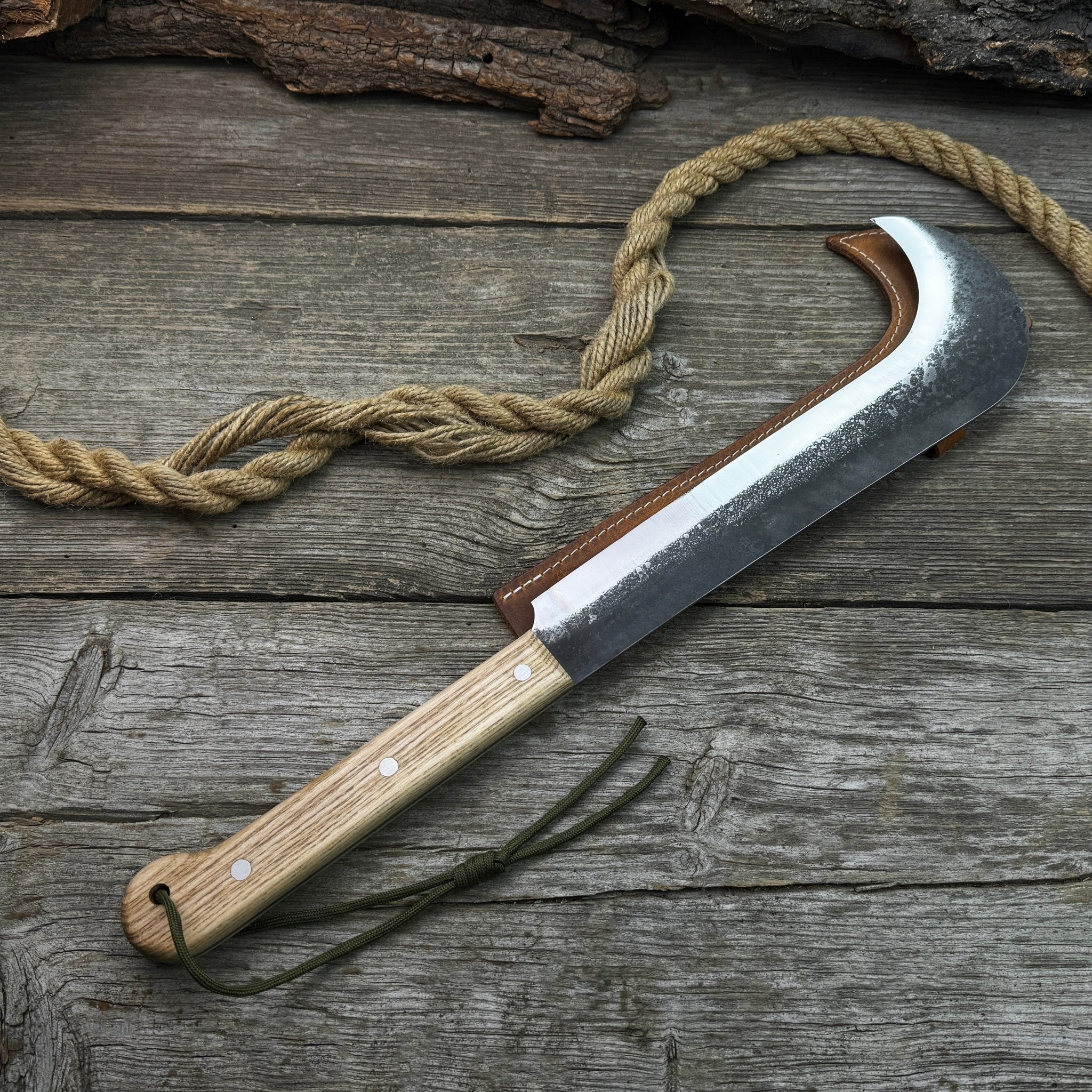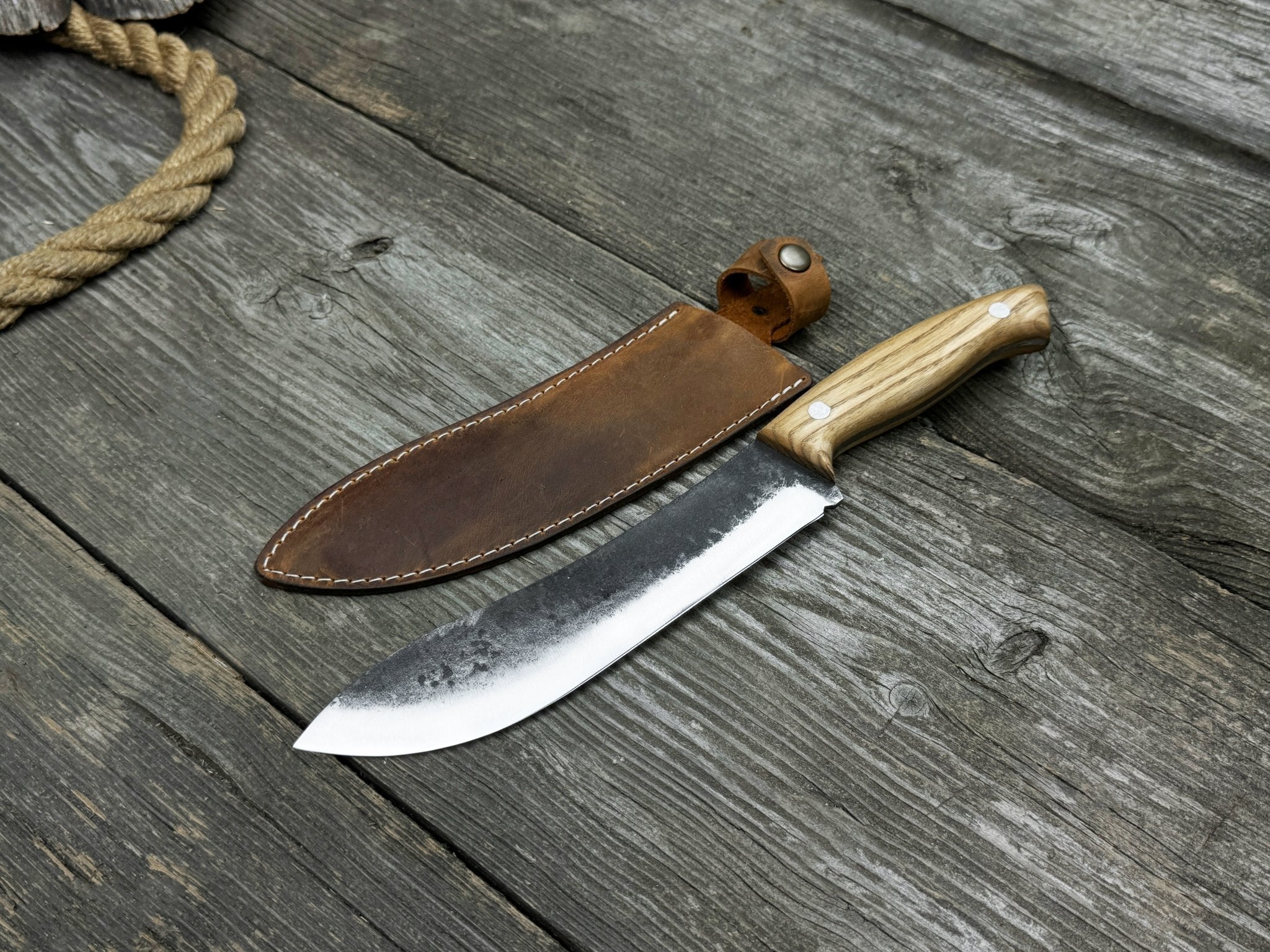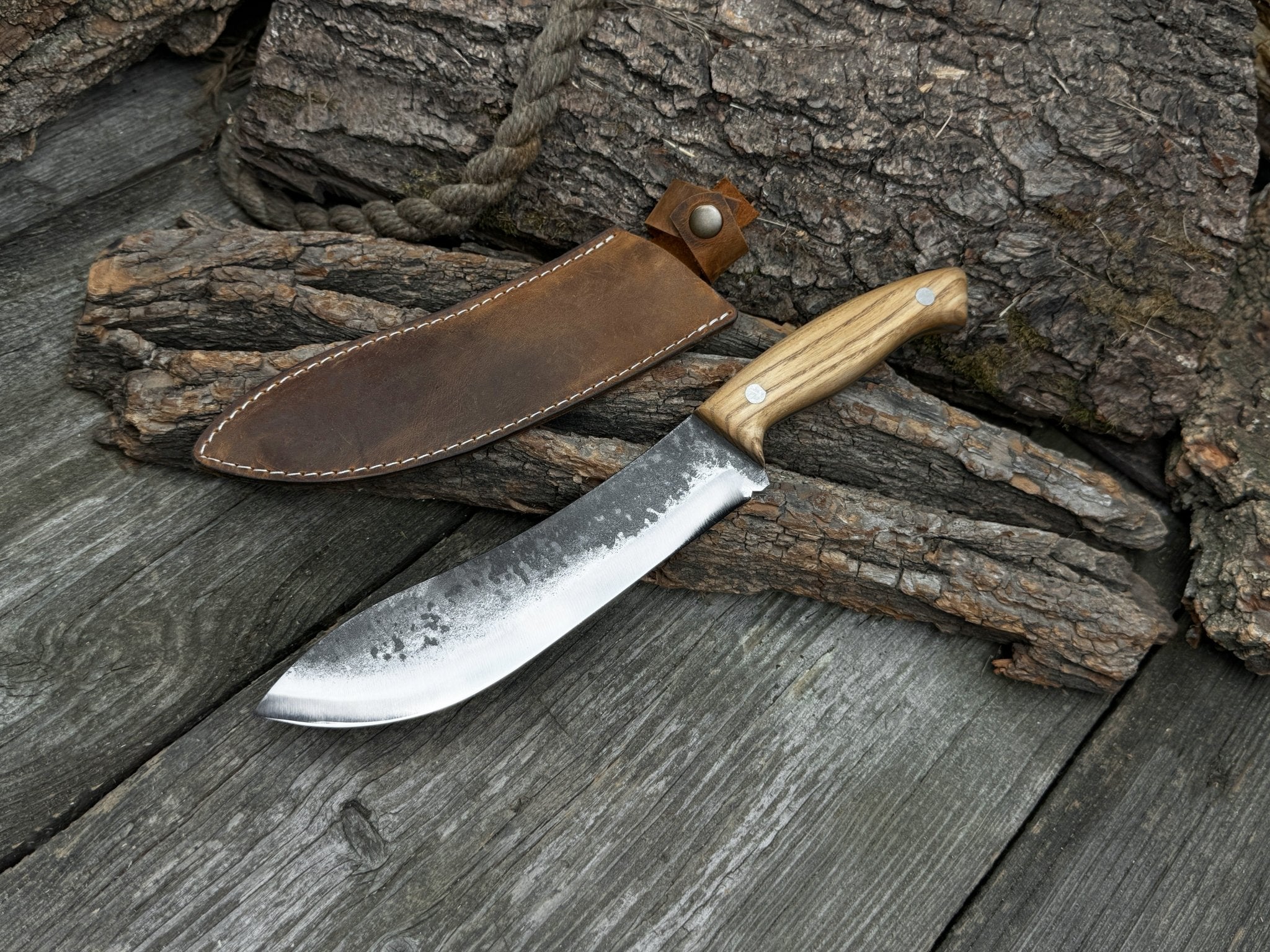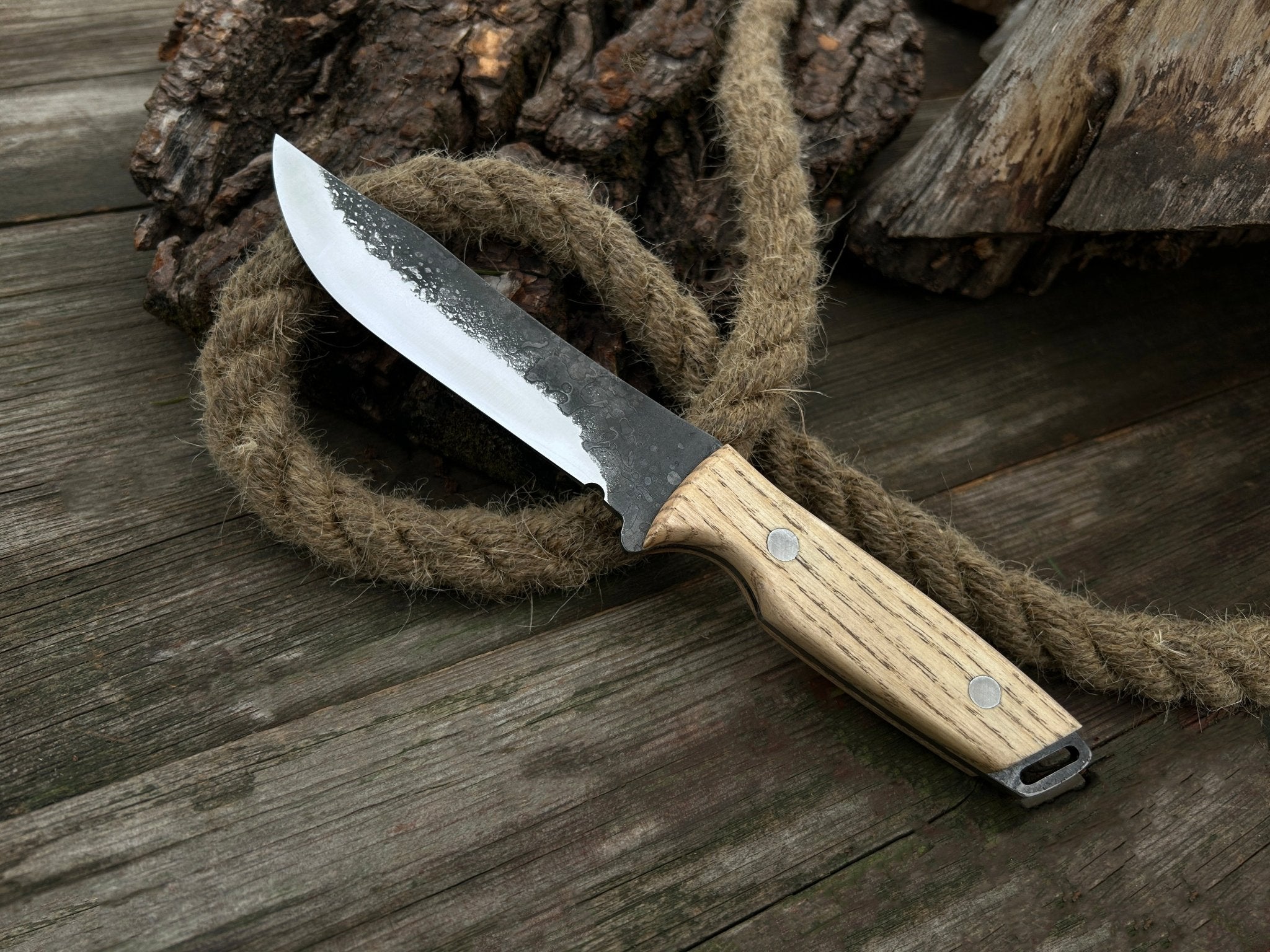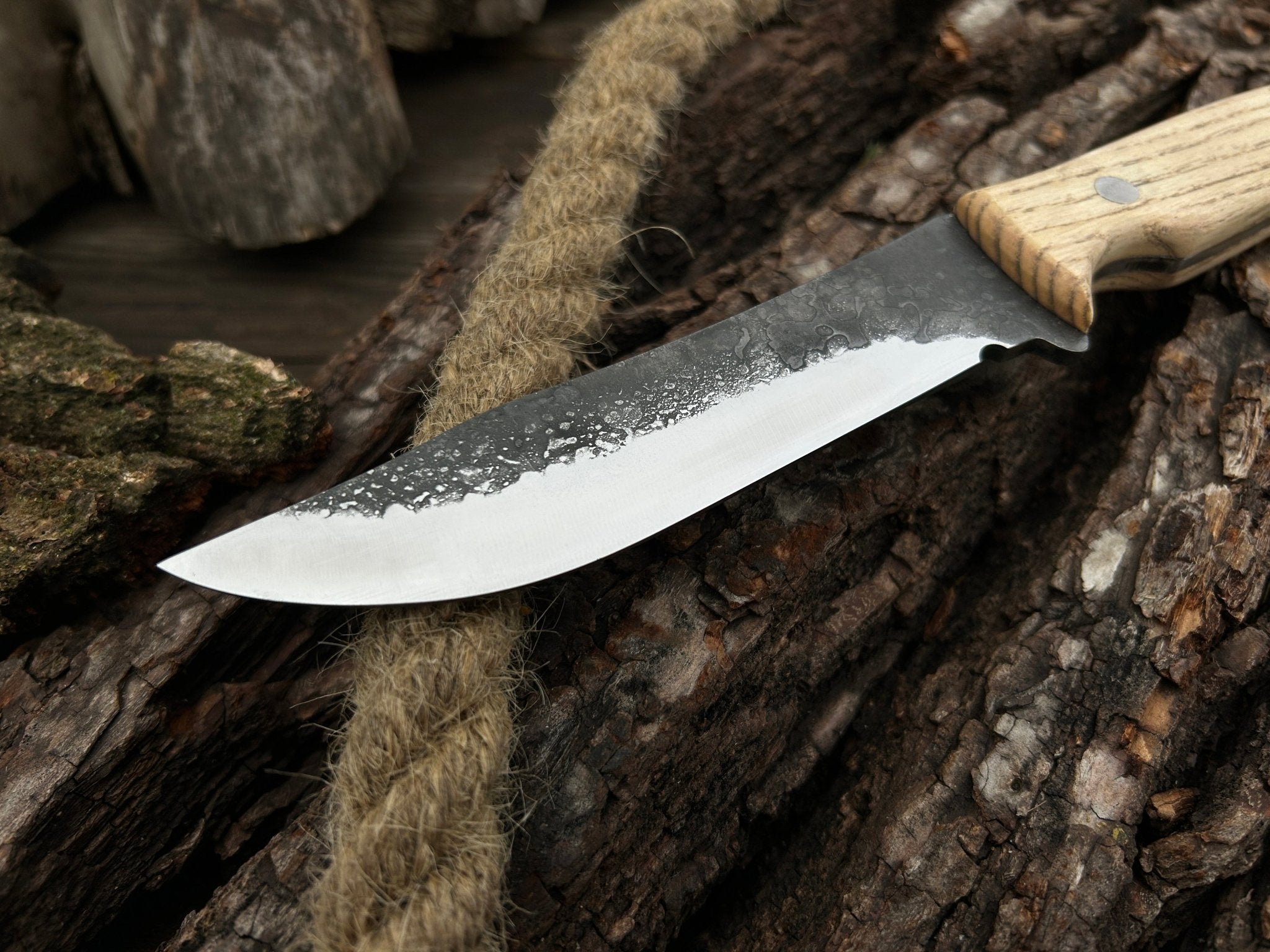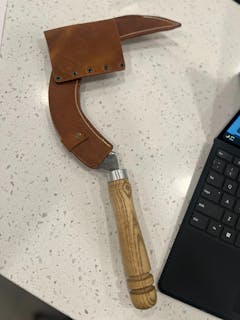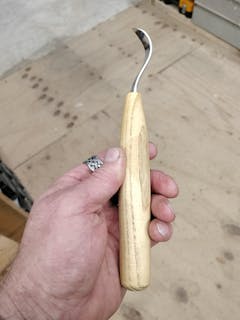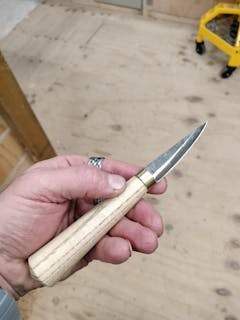Hand-Forged Bushcraft Knife, 10 cm (3.9 in) Blade with Leather Sheath
Hand-Forged Camping Knife, 12.5 cm (4.9 inches)
Hand-Forged Yakut Blade with Leather Sheath, 10 cm (3.93 inches)
Hand-Forged Yakut Knife with Leather Sheath, 9.5 cm (3.74 inches)
Hand-Forged Bushcraft Knife, 20.5 cm (8.07 inches)
Hand-Forged Bushcraft Knife, 12 cm (4.72 inches)

Hand-Forged Bushcraft Knife, 15.5 cm (6.1 inches)
Hand-Forged Bushcraft Knife, 27 cm (10.6 inches)
Hand-Forged Bushcraft Knife, 17 cm (6.7 inches) with leather sheath
Hand-Forged Bushcraft Knife, 12 cm (4.72 inches)
Key Features to Consider When Choosing a Bushcraft Knife
Blade Design Tailored for Versatility
The art of living in the wild is known as “bushcraft”. It involves interacting with the nature in a meaningful way, so that you can start a fire, construct a shelter from natural materials, find and purify water, identify edible plants and berries, track animals, navigate, tie knots, and efficiently use and maintain knives, axes, and other essential bushcraft tools.
You may come across different types of tools recommended for bushcraft, and bushcraft knives will definitely be on the list. They may feature different blades that expand their use beyond general woodworking tasks:
- Drop Point: The back of the blade goes smoothly down towards the point. With a tough and controllable point, this bushcrafting knife offers a large cutting surface and can handle versatile wood carving tasks like notching and slicing.
- Spear Point: The design features a symmetrical blade where the tip is in line with the middle of the blade, commonly found in puukko knives. It is suited for piercing, thrusting, creating holes in wood, and other detailed woodworking tasks.
- Tanto Tip: This type of blade is rare due to being less controllable. It combines characteristics of combat-style blades and practical outdoor applications. Its angular tip with a straight edge or an extra point near the tip makes it useful for thick branches, drilling holes in wood, and clearing bush.
- Clip Point: The design has a concave curve from the spine to the tip, making a fine point. It is widely used for piercing and stabbing but is not suitable for drilling into wood.
- Flat Grind: A bushcrafting knife with a flat grind features a flat, uninterrupted edge. It is a good choice for those seeking a balance between strength and sharpness. It can be used for various bushcraft activities like whittling, carving, food preparation, batoning smaller logs, shaving wood for fire, and general camping chores.
- Scandinavian (Scandi) Grind: Known for its simplicity, this blade has a single bevel that runs from the edge to the spine. It is commonly used in woodworking and carving, modified Scandi grind has an additional secondary bevel at the tip of the blade, providing a thicker edge. With such a grind, this knife is suited for heavier tasks like chopping, batoning, and general camp work. It is slightly less precise compared to the classic Scandi grind and may be somewhat more difficult to sharpen.
What Makes Our Bushcraft Knives Unique?
Sharky Forged Steel Tools™ offers handmade bushcraft knives in sizes ranging from 7cm (2.8 inches) to 36 (14.2 inches), suitable for hiking, hunting, and camping. They come with leather sheaths for protection and have a full-tang construction that makes them strong enough for tough use. Other benefits include:
- Quality Materials: The blades are made from high-quality 52100 carbon steel, hardened to 59/62 HRC for excellent edge retention and durability. The ash wood handles are lightweight and comfortable.
- Hardened and Easy to Sharp: Each knife is hand-forged, providing both a personal touch and high functionality. They all come ready to use upon delivery.
- Customized Upon Request: If you have a special design in mind, just get in touch with our team. We have years of experience in hand-forging and can craft best camping knives to suit your needs.
- Worldwide Shipping: If you are looking for bushcraft knives near me, Sharky Forged Steel Tools™delivers worldwide and offers refunds and exchanges.
- Reasonable Pricing: These handmade bushcraft knives offer top-notch craftsmanship at an affordable price, ready for your next outdoor trip.
Understanding the Core Functionality of Bushcraft Knives
The Ultimate Tool for Yours Tasks
Bushcraft knives can handle lots of woodcrafting tasks, from making traps to feather sticks. Here are some of the most common uses, in addition to general cutting and slicing:
- Whittling: Creating wooden tools, utensils, or shelters often involves whittling, which requires precise cutting and shaping.
- Chopping: While not as efficient as an axe, a bushcrafting knife can chop small branches and kindling for a fire.
- Food Preparation: Bush knives can be used to skin animals, clean fish, and chop vegetables.
- Starting Fire: Some bushcraft knives have a notch on the blade for creating a fire using a flint and steel or a fire starter.
- Batoning: This technique involves placing the knife’s edge on a piece of wood and then striking the spine of the knife with another piece of wood. Bushcraft knives featuring robust, durable blades can handle such tasks with ease.
How Bushcraft Knives Differ from Other Tools
When getting started, it is essential to know that bushcraft knives are different from other camping tools.
Unlike larger tools like axes or machetes, which are better for chopping, bushcraft knives have a combined shape for cutting, slicing, and detailed work. The best bushcraft knife would feature a compact blade (3.5-6 inches), a sturdy spine for striking fire starters, and a Scandi grind for easy sharpening in the wild. While multitools offer a range of functions, bushcraft knives are built for both intricate detail work and medium-duty outdoor tasks.
Comparing Bushcraft Knives to Other Tools
Bushcraft Knife vs. Survival Knife
Bush knives and survival knives are often used interchangeably, but they usually serve different purposes.
Bushcraft knives are primarily designed for precision tasks related to woodworking, such as making firewood, crafting camp furniture, creating tent pegs, etc. Survival knives, on the other hand, may be used not only for woodcraft but also for tasks like breaking locks or cutting through materials like aluminum and plastic.
The types of tasks these knives can handle are mostly determined by their bevels. Bush knives often have a Scandinavian grind, which excels at pushing wood aside when carving, while survival knives usually feature a flat grind, allowing for more versatile task handling.
Bushcraft Knife vs. Axe or Machete
If you are new to bushcraft, it may be difficult to select the right tools. This breakdown will help:
Bushcraft Knife:
- Primary Functions: This tool excels in cutting, slicing, whittling, and more detailed work.
- Limitations: It may struggle with demanding chopping tasks or when clearing dense undergrowth.
Axe:
- Primary Functions: It is intended for robust activities such as chopping wood, clearing underbrush, and splitting logs.
- Limitations: Its heavier weight makes it less convenient to transport compared to a knife or machete.
Machete:
- Primary Functions: This tool is primarily used for clearing brush, cutting through thick foliage, and handling rugged challenges.
- Limitations: It does not offer the same level of precision as a knife for finer tasks.
When to Choose Each:
- Bushcraft Knives: A reliable choice for everyday tasks, food preparation, and smaller endeavors.
- Axes: The go-to tool for demanding operations like splitting firewood and tackling dense brush.
- Machetes: An excellent option for navigating through thick vegetation.
Conclusion
Why Our Hand-Forged Bushcraft Knives Stand Out
Sharky Forged Steel Tools™ offers a range of handcrafted bushcraft knives, each built to last and perform in the most demanding outdoor conditions.
Made from high-carbon and wear-resistant hardwood, these knives feature full-tang construction, ensuring exceptional durability and strength. Available in various sizes to suit different needs, from compact hiking companions to larger tools for hunting and camping, our bushcraft knives are designed to be both functional and aesthetically pleasing.
Whether you are seeking a ready-to-use blade or a custom-made piece, be sure to check out our top offerings.
Get Expert Help in Selecting the Right Knife
If you are unsure which bushcraft knife to choose, contact us right away. Simply email us or fill out a contact form, and we will respond promptly. Let us know:
- Your intended use: Are you looking for a bushcraft knife for hiking, camping, hunting, or general outdoor activities?
- Your experience level: Are you a beginner or an experienced bushcrafter?
- Your preferences: Do you have any specific preferences for blade style, handle material, or overall size?
- Your budget: What is your budget for a bushcraft knife?
We can help you select the best option that would suit your requirements and ensure a satisfying outdoor experience!
